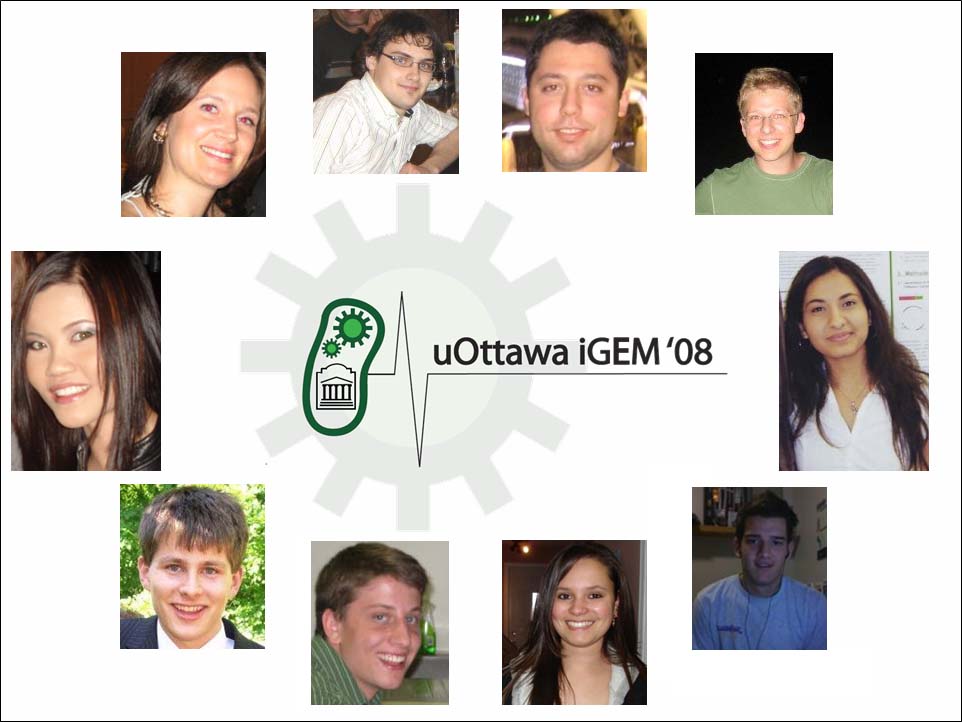Team:University of Ottawa
From 2008.igem.org
| Line 25: | Line 25: | ||
| - | '''Project | + | '''Project Description ''' |
When large quantities of protein are required for industrial, pharmaceutical and research purposes, researchers may resort to expression of the loci of interest in a genetically modified organism. Once these transgenic organisms are built, they will be grown to sufficient titer before undergoing extraction for the protein of interest. In the case of microorganisms, this is performed in large bioreactors, where the protein of interest will be extracted from a continuously growing cell culture. When the protein of interest is excessively large or toxic to the cell, synthesis by the organism is difficult, and the use of bioreactors is limited. In the bioreactor, a small subpopulation of cells emerges, where the cells are not expressing the protein correctly. This subpopulation soon dominates due to positive selective pressure, and the use of the bioreactor becomes less effective with time. After a couple of months, the bioreactor will become inefficient, and will have to be “restarted”, a long and costly process. The goal of this year’s uOttawa iGEM team consists of generating a yeast strain capable of long term protein expression. | When large quantities of protein are required for industrial, pharmaceutical and research purposes, researchers may resort to expression of the loci of interest in a genetically modified organism. Once these transgenic organisms are built, they will be grown to sufficient titer before undergoing extraction for the protein of interest. In the case of microorganisms, this is performed in large bioreactors, where the protein of interest will be extracted from a continuously growing cell culture. When the protein of interest is excessively large or toxic to the cell, synthesis by the organism is difficult, and the use of bioreactors is limited. In the bioreactor, a small subpopulation of cells emerges, where the cells are not expressing the protein correctly. This subpopulation soon dominates due to positive selective pressure, and the use of the bioreactor becomes less effective with time. After a couple of months, the bioreactor will become inefficient, and will have to be “restarted”, a long and costly process. The goal of this year’s uOttawa iGEM team consists of generating a yeast strain capable of long term protein expression. | ||
Revision as of 19:40, 3 July 2008
Welcome to the uOttawa Team Wiki!
We are a team consisting of 3 advisors and 12 undergraduates from the University of Ottawa. We are the first team from the University of Ottawa to participate in the iGem competition. Our team members come from a variety of backgrounds and each bring something unique to the team, feel free to take a look at our team page to find out more about us.
Project Description
When large quantities of protein are required for industrial, pharmaceutical and research purposes, researchers may resort to expression of the loci of interest in a genetically modified organism. Once these transgenic organisms are built, they will be grown to sufficient titer before undergoing extraction for the protein of interest. In the case of microorganisms, this is performed in large bioreactors, where the protein of interest will be extracted from a continuously growing cell culture. When the protein of interest is excessively large or toxic to the cell, synthesis by the organism is difficult, and the use of bioreactors is limited. In the bioreactor, a small subpopulation of cells emerges, where the cells are not expressing the protein correctly. This subpopulation soon dominates due to positive selective pressure, and the use of the bioreactor becomes less effective with time. After a couple of months, the bioreactor will become inefficient, and will have to be “restarted”, a long and costly process. The goal of this year’s uOttawa iGEM team consists of generating a yeast strain capable of long term protein expression.

|
 "
"
